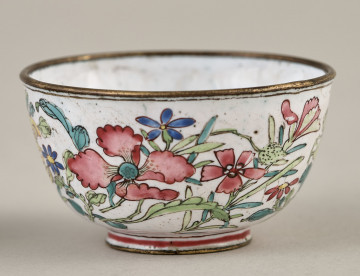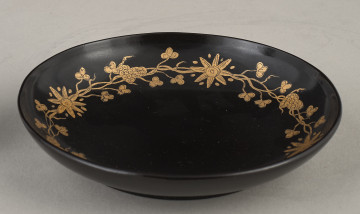
Saucer
18th-19th century
Castle Museum in Łańcut
Part of the collection: Orient
Copper enamelled can in the shape of a flattened sphere with vertical grooves, opened in the central part. The object is covered with opaque enamel in fa-lang type. The green background features flower scrolls and figural scenes on the background of architecture in decorative fields. On the lid a large circular field filled with a figural scene on a landscape background. Interior covered with white enamel. The tin dates to the 19th century and comes from China. In the 1st century AD, during the reign of the Kangxi Dynasty, the Yangxin Hall workshops were established. They were located in the imperial palace where various forms of arts and crafts were produced. One of the workshops was called falang Zuo. Initially the produced enamels were imported from Europe, but in 1728 AD the Chinese managed to produce them and even introduced additional colors. In 55, the Kangxi workshop began to experiment with making falangcai on porcelain. In the Kangxi period, the wares have a colored surface imitating the cloisonné form, the most popular colors were red and yellow. In the Yongzheng period, more varieties of decoration were introduced. The decoration is drawn on the glazed surface instead of the unglazed surface in the Kangxi period. They include floral, bird and landscape motifs. During the reign of Qianlong, there were even those decorated with human figures in the European style. Among the falang colors, by far the most distinctive and important color in the fencai palette is pink.
Author / creator
Dimensions
height: 5.4 cm
Object type
Orient
Technique
enamelling
Material
copper
Creation time / dating
Creation / finding place
Owner
Castle Museum in Łańcut
Identification number
Location / status

18th-19th century
Castle Museum in Łańcut

2nd half of the 19th century
Castle Museum in Łańcut

17th-18th (?) century
Castle Museum in Łańcut
DISCOVER this TOPIC
Museum of King Jan III's Palace at Wilanów
DISCOVER this PATH
Educational path